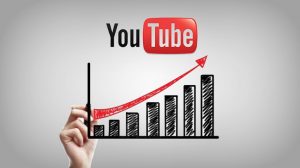Ask any SEO professional about short tail keywords, and they will tell you not to bother. In fact, even established large sites find it difficult to rank well for competitive short tail keywords. The advice is to go after the long tail where you can find some keyword phrases where you can rank well. However, there is a method of using the long tail to rank your short tail terms.
First of all, take one of your short tail phrases. Now use one of the many tools online to gather a list of related keywords. To capture all of the keywords you need for this to work, look at the intent and gather keyword phrases for all intents. For example, if the short tail term is “house paint,” then you need keyword phrases that cover buying, selling, types, brands, uses, and techniques.
The process now is to build pages for every single one of those keyword phrases. Each page should have comprehensive coverage of the topic and any and all sub-topics. All of these pages should link back to the main topic page which will rank for the short tail keyword.
You need to them build authority and backlinks to every one of the subpages, which will transfer authority and help improve the ranking for the short tail keyword. Be patient as this process can take time, but with the right content and focus, the main page will slowly rise in the search results.


 Search engine ranking and SEO are key components of the planning process that goes into the creation of a new article or blog post. When you build new pages, search engine ranking is often critical for traffic and sales. The same level of planning should go into the creation of video content. Here are some important considerations when producing video content for YouTube:
Search engine ranking and SEO are key components of the planning process that goes into the creation of a new article or blog post. When you build new pages, search engine ranking is often critical for traffic and sales. The same level of planning should go into the creation of video content. Here are some important considerations when producing video content for YouTube: Often, most users upload images without any consideration of size or disk space. Uploading large images was not an issue until Google made page load speed a ranking factor. One of the best ways to improve both loading times and page speed is to optimize your images. Image optimization is also something that non-technical users can do with very minimal software. Here we look at several tools that you can use to optimize your post and site images.
Often, most users upload images without any consideration of size or disk space. Uploading large images was not an issue until Google made page load speed a ranking factor. One of the best ways to improve both loading times and page speed is to optimize your images. Image optimization is also something that non-technical users can do with very minimal software. Here we look at several tools that you can use to optimize your post and site images. In 2013 Google launched its Hummingbird update to the search engine’s algorithm. With the launch, Google began a transition to a focus on topics and entities from keywords. Moving towards topics and entities led to less emphasis on keyword research. However, there is still a lot of value that an organization can gain. Here are few:
In 2013 Google launched its Hummingbird update to the search engine’s algorithm. With the launch, Google began a transition to a focus on topics and entities from keywords. Moving towards topics and entities led to less emphasis on keyword research. However, there is still a lot of value that an organization can gain. Here are few:




